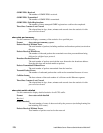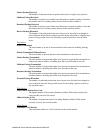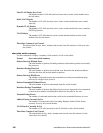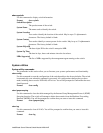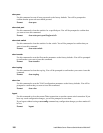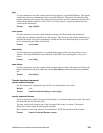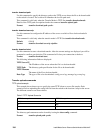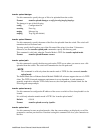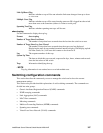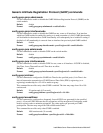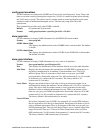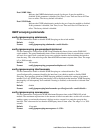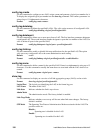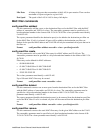186 Intel® Blade Server Ethernet Switch Module IXM5414E
Format transfer upload start
The following information fields are displayed:
TFTP Server IP Address
The Internet Protocol (IP) address of the server where the file is to be uploaded.
TFTP File Path
The directory path specification for the file to be uploaded.
TFTP File Name
The name to be given to the file after it has been uploaded.
File Type The type of file to be uploaded: config, error log, message log or trap log.
Trap manager
config trapflags authentication
Use this command to enable or disable the Authentication Flag, which determines whether a trap
message is sent when the switch detects an authentication failure.
Default enable
Format config trapflags authentication <enable/disable>
config trapflags linkmode
Use this command to enable or disable Link Up/Down traps for the entire switch. When enabled,
link trap messages are sent only if the Link Trap flag associated with the affected port is also set to
enabled.
Default enable
Format config trapflags linkmode <enable/disable>
config trapflags multiusers
Use this command to enable or disable Multiple User traps. When enabled, a multiple user trap
message is sent when a user logs in to the terminal interface (EIA 232 or Telnet) and there is an
existing terminal interface session for the same user account.
Default enable
Format config trapflags multiusers <enable/disable>
config trapflags stpmode
Use this command to enable or disable STP traps. When enabled, topology change notification trap
messages will be sent.
Default enable
Format config trapflags stpmode <enable/disable>
show trapflags
Use this command to display trap conditions. When the condition identified by an active trap is
encountered by the switch a trap message will be sent to any enabled SNMP Trap Receivers, and a
message will be written to the trap log. Cold and warm start traps are always enabled.
Format show trapflags
Authentication Flag
Indicates whether authentication failure traps will be sent (enable) or not (disable).



